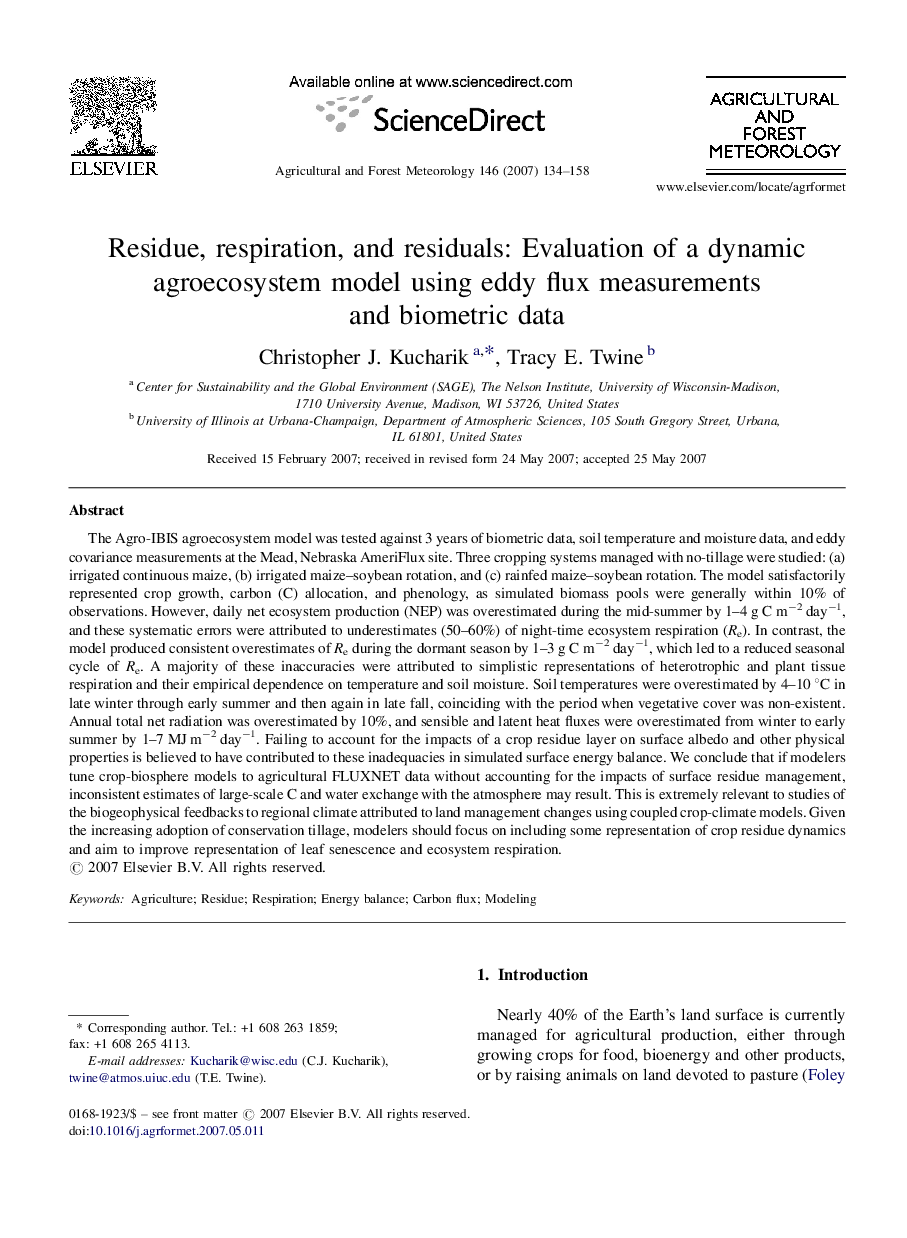| Article ID | Journal | Published Year | Pages | File Type |
|---|---|---|---|---|
| 82887 | Agricultural and Forest Meteorology | 2007 | 25 Pages |
The Agro-IBIS agroecosystem model was tested against 3 years of biometric data, soil temperature and moisture data, and eddy covariance measurements at the Mead, Nebraska AmeriFlux site. Three cropping systems managed with no-tillage were studied: (a) irrigated continuous maize, (b) irrigated maize–soybean rotation, and (c) rainfed maize–soybean rotation. The model satisfactorily represented crop growth, carbon (C) allocation, and phenology, as simulated biomass pools were generally within 10% of observations. However, daily net ecosystem production (NEP) was overestimated during the mid-summer by 1–4 g C m−2 day−1, and these systematic errors were attributed to underestimates (50–60%) of night-time ecosystem respiration (Re). In contrast, the model produced consistent overestimates of Re during the dormant season by 1–3 g C m−2 day−1, which led to a reduced seasonal cycle of Re. A majority of these inaccuracies were attributed to simplistic representations of heterotrophic and plant tissue respiration and their empirical dependence on temperature and soil moisture. Soil temperatures were overestimated by 4–10 °C in late winter through early summer and then again in late fall, coinciding with the period when vegetative cover was non-existent. Annual total net radiation was overestimated by 10%, and sensible and latent heat fluxes were overestimated from winter to early summer by 1–7 MJ m−2 day−1. Failing to account for the impacts of a crop residue layer on surface albedo and other physical properties is believed to have contributed to these inadequacies in simulated surface energy balance. We conclude that if modelers tune crop-biosphere models to agricultural FLUXNET data without accounting for the impacts of surface residue management, inconsistent estimates of large-scale C and water exchange with the atmosphere may result. This is extremely relevant to studies of the biogeophysical feedbacks to regional climate attributed to land management changes using coupled crop-climate models. Given the increasing adoption of conservation tillage, modelers should focus on including some representation of crop residue dynamics and aim to improve representation of leaf senescence and ecosystem respiration.
